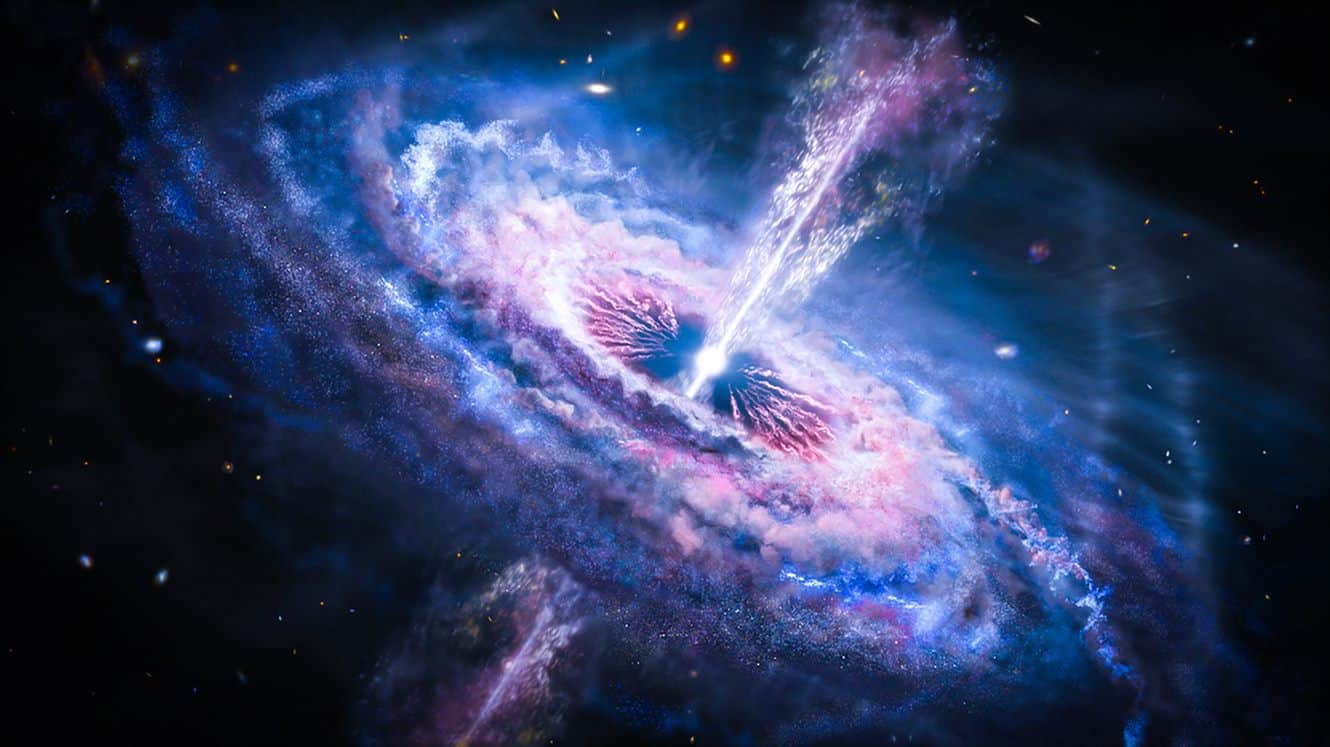(CN) — If someone tells you the world was slower in the past, believe them.
For the first time, scientists have discovered the early universe was moving in extreme slow motion, backing up Albert Einstein’s expanding universe theory.
Scientists cracked the mystery by using quasars as “clocks” in order to peer into the past after the Big Bang. The research was published Monday in the journal Nature Astronomy.
“Looking back to a time when the universe was just over a billion years old, we see time appearing to flow five times slower,” said Geraint Lewis, lead author of the study and a professor at the School of Physics and Sydney Institute for Astronomy at the University of Sydney in Australia.
“If you were there, in this infant universe, one second would seem like one second," Lewis said. "But from our position, more than 12 billion years into the future, that early time appears to drag.”
Lewis and co-author of the study, Brendon Brewer from the University of Auckland, studied data from 200 quasars — supermassive black holes at the center of a distant galaxies. Lewis, who is originally from Wales, called quasars “very complicated objects.”
The data set used was collected by another group of scientists over a 20-year period.
“For me, for this particular project, I was just analyzing the data. That was my focus,” said Lewis, speaking over the phone for this interview in Italy outside of Venice.
“What happened was last year they made their data public. They released it to other astronomers. I had the data and thought, ‘I’ve been interested in this question of slow-motion universe for a while. Maybe I can find the signal of that in this new data set.’”
Some of the credit goes to perhaps the most influential physicist of the 20th century.
“Thanks to Einstein, we know that time and space are intertwined and, since the dawn of time in the singularity of the Big Bang, the universe has been expanding,” Lewis said. “This expansion of space means that our observations of the early universe should appear to be much slower than time flows today. In this paper, we have established that back to about a billion years after the Big Bang.”
Astronomers had previously confirmed the slow-motion universe back to about half the age of the universe using supernovae — massive exploding stars — as "standard clocks." Supernovae are difficult to observe, however, because of the massive distances needed to peer into the early universe.
By observing quasars, this time horizon has been rolled back to just a tenth the age of the universe, confirming that the universe appears to speed up as it ages.
Lewis said: “Where supernovae act like a single flash of light, making them easier to study, quasars are more complex, like an ongoing firework display. What we have done is unravel this firework display, showing that quasars, too, can be used as standard markers of time for the early universe.”
Along with astro-statistician Brewer, the pair observed the quasars at different colors, or wavelengths — red light, green light and infrared — which allowed them to standardize the “ticking” of each quasar. They discovered the expansion of the universe imprinted on each quasar’s ticking.
“With these exquisite data," Lewis said, "we were able to chart the tick of the quasar clocks, revealing the influence of expanding space.”
These results further confirm Einstein’s findings of an expanding universe while contrasting earlier studies that had failed to identify the time dilation of distant quasars.
“These earlier studies led people to question whether quasars are truly cosmological objects, or even if the idea of expanding space is correct,” Lewis said.
“With these new data and analysis, however, we’ve been able to find the elusive tick of the quasars and they behave just as Einstein’s relativity predicts,” he continued.
“I am very pleased,” Lewis added. “It puts a lot of questions to bed now.”
Subscribe to Closing Arguments
Sign up for new weekly newsletter Closing Arguments to get the latest about ongoing trials, major litigation and hot cases and rulings in courthouses around the U.S. and the world.









